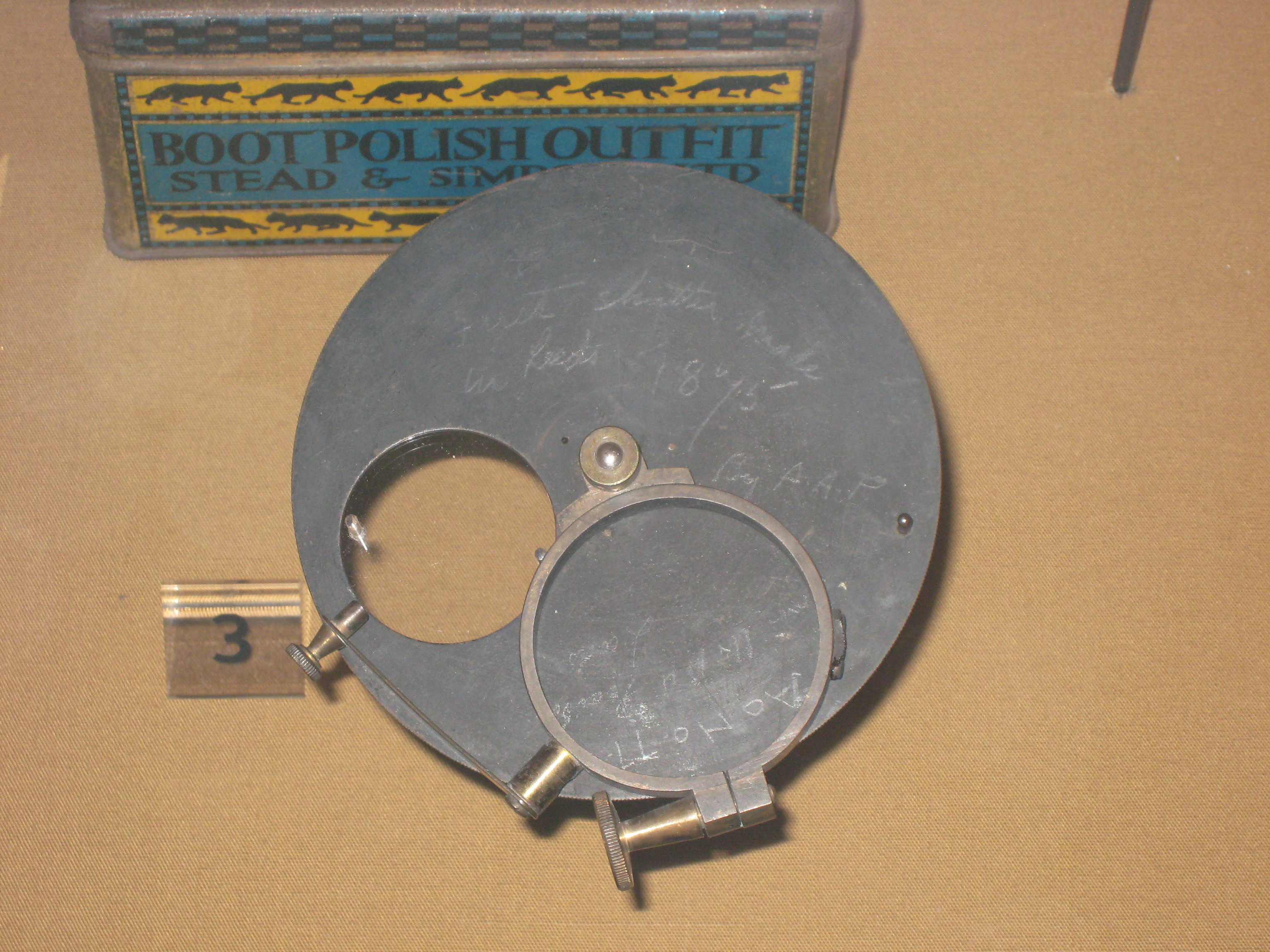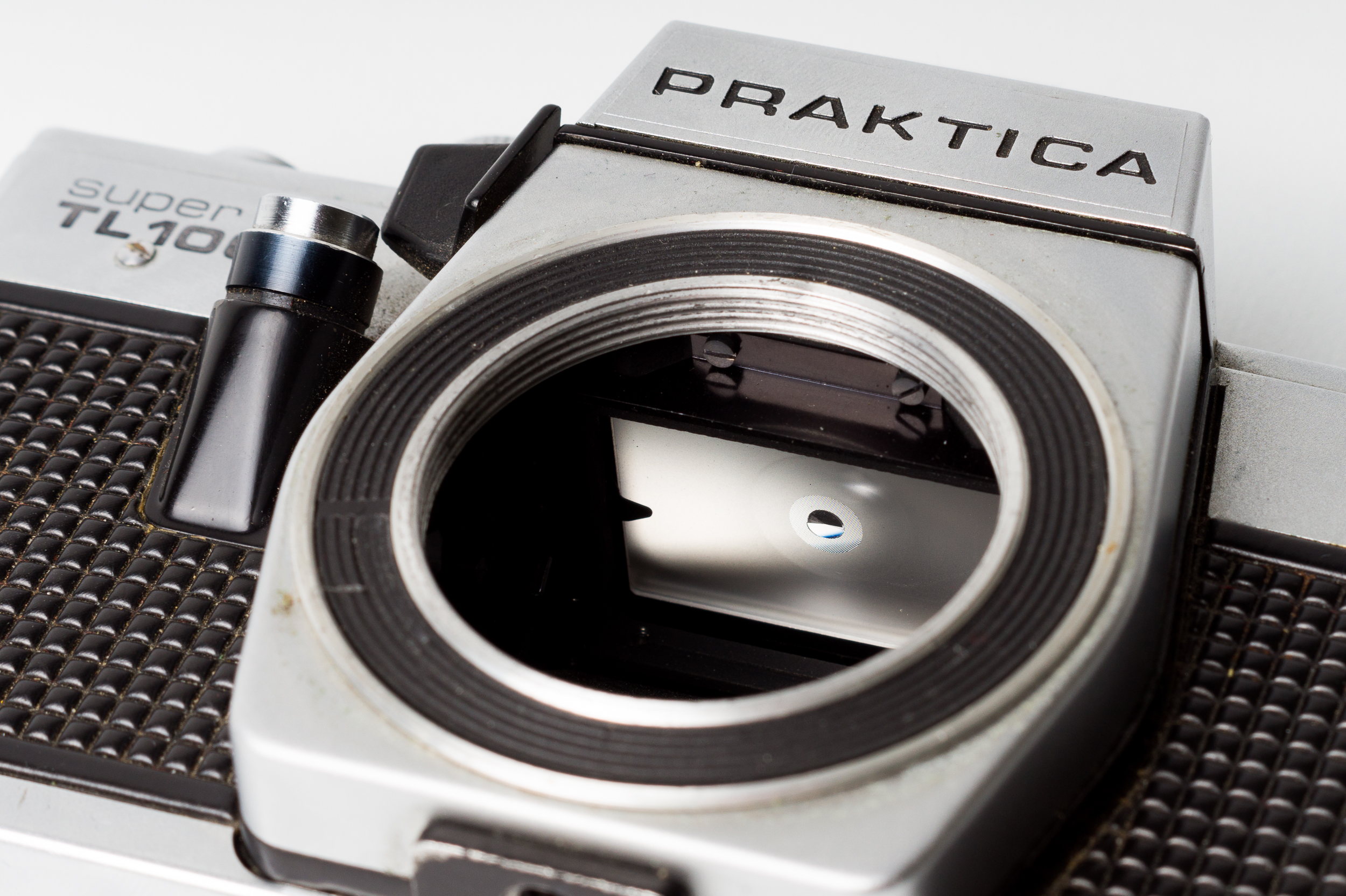|
Canon AE-1 Program
The Canon AE-1 Program is a 35 mm single-lens reflex camera that uses Canon's FD mount lenses. It was introduced in April 1981 as the successor to the Canon AE-1, five years after that camera's introduction. The major difference was the addition of the Program AE mode first seen in the A-1. This mode sets both the shutter speed and aperture automatically—albeit with a slight bias towards the shutter speed setting. The user focuses the camera and then presses the shutter button. For those desiring more control, the AE-1's shutter priority auto- exposure and full manual modes are still available. Features Like the A-1, the AE-1 Program has a right-hand "action grip" on the front of the camera. It also supports the A-1's Motor Drive MA; this requires another electrical contact on the base plate. The AE-1's Power Winder A, and a new, faster Power Winder A2, are also supported. The viewfinder uses LEDs to show information to the user. Also like the A-1, the AE-1 ... [...More Info...] [...Related Items...] OR: [Wikipedia] [Google] [Baidu] |
Canon (company)
is a Japanese multinational corporation headquartered in Ōta, Tokyo, Japan, specializing in optical, imaging, and industrial products, such as lenses, cameras, medical equipment, scanners, printers, and semiconductor manufacturing equipment.Corporate Profile " ''Canon''. Retrieved on 13 January 2009. Canon has a primary listing on the and is a constituent of the Core30 and index. It has a secondary ... [...More Info...] [...Related Items...] OR: [Wikipedia] [Google] [Baidu] |
Exposure (photography)
In photography, exposure is the amount of light per unit area (the image plane's illuminance times the exposure time) reaching a frame of photographic film or the surface of an electronic image sensor, as determined by shutter speed, lens F-number, and scene luminance. Exposure is measured in lux seconds, and can be computed from exposure value (EV) and scene luminance in a specified region. An "exposure" is a single shutter cycle. For example, a long exposure refers to a single, long shutter cycle to gather enough dim light, whereas a multiple exposure involves a series of shutter cycles, effectively layering a series of photographs in one image. The accumulated ''photometric exposure'' (''H''v) is the same so long as the total exposure time is the same. Definitions Radiant exposure Radiant exposure of a ''surface'', denoted ''H''e ("e" for "energetic", to avoid confusion with photometric quantities) and measured in , is given by :H_\mathrm = E_\mathrmt, where *''E'' ... [...More Info...] [...Related Items...] OR: [Wikipedia] [Google] [Baidu] |
Photographic Lens
A camera lens (also known as photographic lens or photographic objective) is an optical lens or assembly of lenses used in conjunction with a camera body and mechanism to make images of objects either on photographic film or on other media capable of storing an image chemically or electronically. There is no major difference in principle between a lens used for a still camera, a video camera, a telescope, a microscope, or other apparatus, but the details of design and construction are different. A lens might be permanently fixed to a camera, or it might be interchangeable with lenses of different focal lengths, apertures, and other properties. While in principle a simple convex lens will suffice, in practice a compound lens made up of a number of optical lens elements is required to correct (as much as possible) the many optical aberrations that arise. Some aberrations will be present in any lens system. It is the job of the lens designer to balance these and produce a desi ... [...More Info...] [...Related Items...] OR: [Wikipedia] [Google] [Baidu] |
Electronics
The field of electronics is a branch of physics and electrical engineering that deals with the emission, behaviour and effects of electrons using electronic devices. Electronics uses active devices to control electron flow by amplification and rectification, which distinguishes it from classical electrical engineering, which only uses passive effects such as resistance, capacitance and inductance to control electric current flow. Electronics has hugely influenced the development of modern society. The central driving force behind the entire electronics industry is the semiconductor industry sector, which has annual sales of over $481 billion as of 2018. The largest industry sector is e-commerce, which generated over $29 trillion in 2017. History and development Electronics has hugely influenced the development of modern society. The identification of the electron in 1897, along with the subsequent invention of the vacuum tube which could amplify and rectify small ... [...More Info...] [...Related Items...] OR: [Wikipedia] [Google] [Baidu] |
Camera Flash
A flash is a device used in photography that produces a brief burst of light (typically lasting 1/1000 to 1/200 of a second) at a color temperature of about 5500 K to help illuminate a scene. A major purpose of a flash is to illuminate a dark scene. Other uses are capturing quickly moving objects or changing the quality of light. ''Flash'' refers either to the flash of light itself or to the electronic flash unit discharging the light. Most current flash units are electronic, having evolved from single-use flashbulbs and flammable powders. Modern cameras often activate flash units automatically. Flash units are commonly built directly into a camera. Some cameras allow separate flash units to be mounted via a standardized accessory mount bracket (a ''hot shoe''). In professional studio equipment, flashes may be large, standalone units, or studio strobes, powered by special battery packs or connected to mains power. They are either synchronized with the camera using a flas ... [...More Info...] [...Related Items...] OR: [Wikipedia] [Google] [Baidu] |
Shutter (photography)
In photography, a shutter is a device that allows light to pass for a determined period, exposing photographic film or a photosensitive digital sensor to light in order to capture a permanent image of a scene. A shutter can also be used to allow pulses of light to pass outwards, as seen in a movie projector or a signal lamp. A shutter of variable speed is used to control exposure time of the film. The shutter is constructed so that it automatically closes after a certain required time interval. The speed of the shutter is controlled by a ring outside the camera, on which various timings are marked. Camera shutter Camera shutters can be fitted in several positions: * Leaf shutters are usually fitted within a lens assembly (''central shutter''), or more rarely immediately behind (''behind-the-lens shutter'') or, even more rarely, in front of a lens, and shut off the beam of light where it is narrow. *Focal-plane shutters are mounted near the focal plane and move to uncover the fil ... [...More Info...] [...Related Items...] OR: [Wikipedia] [Google] [Baidu] |
Curtain
A curtain is a piece of cloth or other material intended to block or obscure light, air drafts, or (in the case of a shower curtain), water. A curtain is also the movable screen or drape in a theatre that separates the stage from the auditorium or that serves as a backdrop/background. Curtains are often hung on the inside of a building's windows to block the passage of light. For instance, at night to aid sleeping, or to stop light from escaping outside the building (stopping people outside from being able to see inside, often for privacy reasons). In this application, they are also known as "draperies". Curtains hung over a doorway are known as portières. Curtains come in a variety of shapes, materials, sizes, colours, and patterns. They often have their own sections within department stores, while some shops are completely dedicated to selling curtains. Curtains vary according to cleanability, ultraviolet light deterioration, oil and dust retention, noise absorption, fire res ... [...More Info...] [...Related Items...] OR: [Wikipedia] [Google] [Baidu] |
Cloth
Textile is an umbrella term that includes various fiber-based materials, including fibers, yarns, filaments, threads, different fabric types, etc. At first, the word "textiles" only referred to woven fabrics. However, weaving is not the only manufacturing method, and many other methods were later developed to form textile structures based on their intended use. Knitting and Nonwoven, non-woven are other popular types of fabric manufacturing. In the contemporary world, textiles satisfy the material needs for versatile applications, from simple daily clothing to Bulletproof vest, bulletproof jackets, spacesuits, and Medical gown, doctor's gowns. Textiles are divided into two groups: Domestic purposes [consumer textiles] and technical textiles. In consumer textiles, Aesthetics (textile), aesthetics and Textile performance#Comfort, comfort are the most important factors, but in technical textiles, Textile performance#Properties, functional properties are the priority. Geotex ... [...More Info...] [...Related Items...] OR: [Wikipedia] [Google] [Baidu] |
Electromagnet
An electromagnet is a type of magnet in which the magnetic field is produced by an electric current. Electromagnets usually consist of wire wound into a coil. A current through the wire creates a magnetic field which is concentrated in the hole in the center of the coil. The magnetic field disappears when the current is turned off. The wire turns are often wound around a magnetic core made from a ferromagnetic or ferrimagnetic material such as iron; the magnetic core concentrates the magnetic flux and makes a more powerful magnet. The main advantage of an electromagnet over a permanent magnet is that the magnetic field can be quickly changed by controlling the amount of electric current in the winding. However, unlike a permanent magnet that needs no power, an electromagnet requires a continuous supply of current to maintain the magnetic field. Electromagnets are widely used as components of other electrical devices, such as motors, generators, electromechanical solen ... [...More Info...] [...Related Items...] OR: [Wikipedia] [Google] [Baidu] |
Focusing Screen
A focusing screen is a flat translucent material, either a ground glass or Fresnel lens, found in a system camera that allows the user of the camera to preview the framed image in a viewfinder. Often, focusing screens are available in variants with different etched markings for various purposes. For instance, "overall matte" focusing screens with no etchings are a popular choice for astrophotography and other low-light situations. Overview The history of the focusing screen is almost as long as the history of the camera. Some primitive cameras consisted of a box with a board holding the lens in the front and a focusing screen in the back that was replaced by the imaging medium (plate, film holder) before taking the picture. The most common type of focusing screen in non-autofocus 35 mm SLR cameras is the split screen and microprism ring variation that aids focusing and became standard in the 1980s. The microprism ring breaks up the image unless the lens setting is in focu ... [...More Info...] [...Related Items...] OR: [Wikipedia] [Google] [Baidu] |
Light-emitting Diode
A light-emitting diode (LED) is a semiconductor device that emits light when current flows through it. Electrons in the semiconductor recombine with electron holes, releasing energy in the form of photons. The color of the light (corresponding to the energy of the photons) is determined by the energy required for electrons to cross the band gap of the semiconductor. White light is obtained by using multiple semiconductors or a layer of light-emitting phosphor on the semiconductor device. Appearing as practical electronic components in 1962, the earliest LEDs emitted low-intensity infrared (IR) light. Infrared LEDs are used in remote-control circuits, such as those used with a wide variety of consumer electronics. The first visible-light LEDs were of low intensity and limited to red. Early LEDs were often used as indicator lamps, replacing small incandescent bulbs, and in seven-segment displays. Later developments produced LEDs available in visible, ultraviolet (UV) ... [...More Info...] [...Related Items...] OR: [Wikipedia] [Google] [Baidu] |








